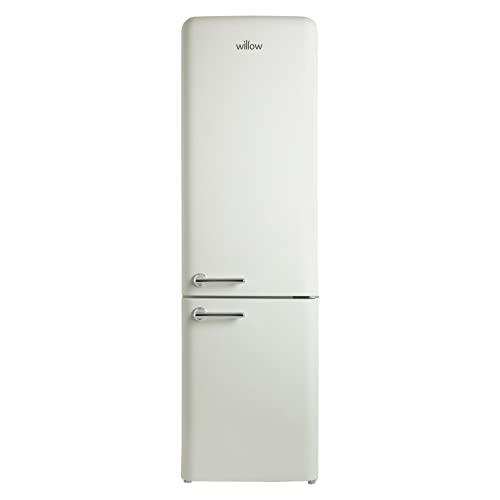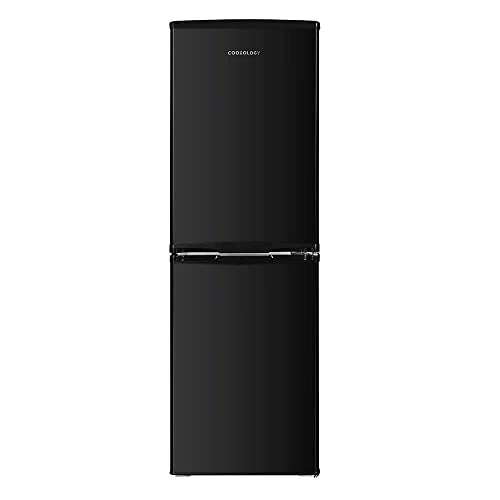 Tips For Organizing Your Fridge Larder
Tips For Organizing Your Fridge Larder A fridge's larder is the ideal location to store food items that are no longer in use. It also lets you run a smaller fridge and save money on your energy bill!
A fridge's larder is the ideal location to store food items that are no longer in use. It also lets you run a smaller fridge and save money on your energy bill!It's a great place to store items such as eggs, bread, and hard cheeses. Fresh herbs also benefit from low moisture.
Keep It In Order
A fridge's larder helps cut down on food waste and makes it easier to find ingredients when cooking. But, just like any other space in your home, the refrigerator can become messy and out of control. Here are a few tips to keep your fridge organized and running smoothly.
Take inventory
The most important part of organizing your kitchen is to take inventory, according to Holly Blakey, a professional organizer at Breathing Room. "Take everything out and look for the expiration dates. Clean all surfaces." Get rid of expired food items, toss or freeze leftovers and throw away all food items that aren't likely to be eaten before they turn bad.
When you replenish your fridge, ensure that the items you use most often used are placed front and center, Blakey advises. Then, tuck away the items that aren't used in the back and the bottom of your fridge.
Organize Your Freezer
If you have a chest freezer you can arrange it using clear storage bins that will allow you to find foods easier. Label each bin clearly and categorize items that are similar. For example, store a bin for condiments, another one for sodas, and another for cheese sticks. You can also use a lazy Susan to store condiments and other items that are frequently used. This will keep them from being lost in the back.
In a side-by-side fridge, store foods that require the coldest temperatures in the back and warmer foods toward the front. The lower shelf is ideal for yogurt, milk cream, butter, and cream (it does not melt). The crisper drawers are ideal to store spillage from produce.
Drawer dividers can make your fridge more functional and are easy to put in. They'll keep your vegetables and fruits from splattering around, and prevent them from spoiling before you can use them. They'll also keep your drawers clean and organized. Another tip for your fridge is to store tender herbs in water to extend their lifespan. (Mason jars with an inch of water are ideal.) You can also buy an herb preserver to keep in your refrigerator.
Keep It Clearly
Keep your fridge organized to help you choose healthy food choices and feel satisfied throughout the day. Make sure that all your food containers and lids are clean so that you can see what's inside. This will inform you of the remaining days on your expiration date and prevent you storing food that is beyond its expiration date.
Start by giving your fridge's larder a thorough clean. Scrub the shelves, drawers, and racks using warm water and dishwashing detergent. Then give your fridge a thorough clean to rid of any gross crumbs and spills that might have accumulated over time.
Once everything is dry and clean, it's time to restock your refrigerator. Start with the deli and cheese drawer -- that's where you should store your cheeses, deli meats leftovers, dairy items and other food items. Then, move on to the produce drawer. This is where you should store leafy greens because they quickly wilt. Make sure it is at least three-quarters full to ensure maximum freshness.
You can store bulky items in the pantry drawers of some refrigerators, including party trays and large bags of frozen veggies. This space can be used to store condiments such as ketchup and mustard, as well as nut-butters and other canned items. Do not store any milk in this area though, as it can be spoiled quickly due to the fluctuating temperatures in the fridge door.
The back of your refrigerator should be reserved for salad dressings, condiments and other jarred items that last for longer. Use a riser on jars to make them easier to read. This will save you from closing and opening the lids a few times.
As you stock each bin, make a effort to label it using a marker or stickers that are easy to read. This will let your family members easily identify what each container holds, and it'll make it easier for you to find what you're looking for. The addition of bins with labels can also be a great method to declutter your fridge and decrease the amount of plastic waste you generate.
Keep Cool
A good fridge freezer best buy larder will keep foods at the right temperature to avoid spoilage and also slow down the growth of bacteria. Larders can be built into existing cabinets or stand on their own. They are typically located on the north-facing side of the house to reduce sunlight exposure. They may also have additional insulation or ventilation to keep heat from getting into the food storage area. They have walls that are thicker with fewer windows, and are generally placed on the north side of your house to reduce heat transfer.
A larder should have one drawer for meat and one for vegetables, each with a specific setting that can be programmed to the proper temperature. This will ensure that the chicken and burgers are cooked to perfection, but the salad greens will not get too wilted. You can set the drawer of your larder to a low-humidity setting for fruits or vegetables that release a lot of moisture like cucumbers or tomatoes.
To preserve cheese, store it in other drawers of the fridge. Wrapped in paper, greaseproof or Clingfilm or greaseproof film to keep it fresher for longer. Other items that can be stored in the refrigerator door include drinks, condiments that are not perishable (like ketchup) eggs, water, and other liquids. The door of the refrigerator is not the best place to store milk, because it is more warm and unstable than other drawers.
To create a minimalist appearance, separating small containers of food and snacks can help make them more visible and helpful when family members are looking for food items on the go. Labeling bins and shelving to indicate what needs to be eaten first could be beneficial, especially when family members aren't used to reading labels!
A larder is also the ideal place to store leftovers and a selection of food-safe plastic and glass containers for storage, which are perfect for storing smaller portions of food items. These containers are great for saving time and money while shopping. And if you have a clear, tidy fridge with an area specifically for storing these items, it will be much easier to stay on top of your food budget!
Keep It Fresh
The best ways to organize your fridge reduce food waste and make your healthy groceries last longer. A few smart strategies will keep your fresh food items at the right temperature and allow you to find what's in your fridge.
Crisper drawers are found in most refrigerators. They alter the airflow and increase humidity, thus extending the life of vegetables and fruits. But it's important to use them in a proper manner. If you mix greens with fruit, for instance, the ethylene released by the latter can cause the former to turn brown and spoil prematurely. Separating different types of fruits and storing them in appropriate drawers is also crucial.
Door shelves are usually the warmest area of the fridge and should be reserved for items that don't require extra cold or special storage conditions such as jam, chutneys, jars of jam salad dressings, and long-life juices (anything that is bought in bulk with the same expiration date). The top shelf can be used to store beverages such as milk and water, which can be stored in a upright position.
Refrigerator drawers can be difficult to organize with all the items that are bouncing around and mixed up, but there are some simple tricks that can aid. Invest in a set refrigerator drawer separators. This will keep your produce separated and prevent them from squishing together. It is also beneficial. Keep produce of similar heights on the same shelf and don't store things that aren't the same height in close proximity Raw meat shouldn't be kept in the same drawer as cooked ham!
A thermometer is a must-have for your fridge larder. It's a cheap, easy-to-use tool that will ensure the fridge is at the optimal temperature to ensure that your food is fresh and safe.
Don't forget to keep a stash of plastic grocery bags in your fridge for storing items that don't have their own container. The moisture trapped inside the bag helps keep vegetables from rotting too quickly. For herbs that normally die within a few days, an easy method to keep them fresher for longer is to wash and place them in a glass of water, which is as effective at retaining moisture as plastic bags.








